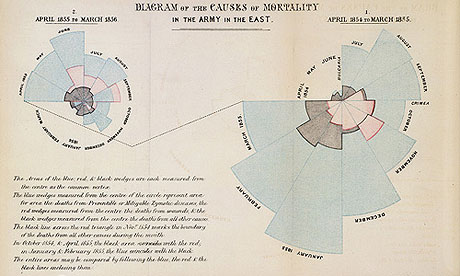
The Guardian’s Data Blog – By Simon Rogers
Simon Rogers: Our 10 point guide to data journalism and how it’s changing
Here’s an interesting thing: data journalism is becoming part of the establishment. Not in an Oxbridge elite kind of way (although here’s some data on that) but in the way it is becoming the industry standard.
Two years ago, when we launched the Datablog, all this was new. People still asked if getting stories from data was really journalism and not everyone had seen Adrian Holovaty’s riposte. But once you’ve hadMPs expenses and Wikileaks, the startling thing is that no-one asks those questions anymore. Instead, they want to know, “how do we do it?”
Meanwhile every day brings newer and more innovative journalists into the field, and with them new skills and techniques. So, not only is data journalism changing in itself, it’s changing journalism too.
These are some of the threads from my recent talks I thought it would be good to put in one place – especially now we’ve got an honourable mention in the Knight Batten award for journalistic innovation. This is about how we do it at the Guardian. In 10 brief points.
1. It may be trendy but it’s not new

Data journalism has been around as long as there’s been data – certainly at least since Florence Nightingale’s famous graphics and report into the conditions faced by British soldiers of 1858. The first ever edition of the Guardian‘s news coverage was dominated by a large (leaked) table listing every school in Manchester, its costs and pupil numbers. [Read more…]
